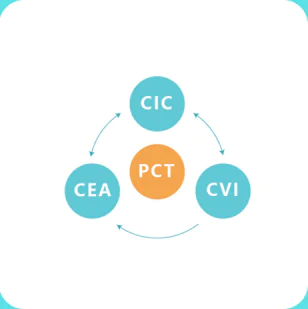
“3C+P”Treatment Model
_____________________________

Schedule Consultation

Schedule Consultation

Cancer can linger silently, much like elevated blood pressure or diabetes, creeping along for years without a dramatic signal. You could carry a patch of sleepy tumor cells for decades and never know it, because the disease stays on standby and waits.
Your immune system acts as the gatekeeper in this entire situation. When the bouncers are alert, any rookie cancer cell that shows its face gets tossed out on the spot. If the guards and attackers are about even, the party just sits there in awkward silence. Later, if the bouncers tire or the cancer cells learn to moonwalk past security, experts label that trick immune escape. By the time physicians detect it, the disease has often expanded, turning a modest complaint into what everyone agrees is a pressing crisis.
Tumors present a vexing riddle; a single mass may act in several ways at once, or separate areas within it may mislead different tests in conflicting directions. That trickiness comes from a restless gene pool – mutation after mutation – meaning a treatment that clicks today might tank next week. To keep up, doctors sometimes mix treatments for every patient or swap out drugs on the fly, and the idea is that staying flexible usually leads to better results.
Most oncologists still lean on a few straight-up rules:
First, go in and cut the beast out if the surgeon thinks it’s safe. Cryoablation and the tiny-yet-mighty Nanoknife are plan-B options for patients who would rather avoid a long scalp incision.
Chemotherapy is a comprehensive treatment that targets rapidly multiplying cells, but it can also harm healthy tissues and the immune system. To shrink the tumor’s edge, some research groups inject the drug directly into the blood vessels surrounding the mass – that kills the cells they want and spares a lot of healthy tissue.
Immunotherapy changes the game by rousing the immune system like a coach shouting, “Wake up and finish the fight you started.” A lot of researchers are betting that pump-up game can hold tumors in check or throw the last punch.
Doctors try to build a one-size-fits-you plan the day they learn about a new tumor. Surgeons, radiation techs, and chemo nurses all look at your spots and decide whether to cut, zap, freeze, or drip a drug. While that is happening, lab folks hunt for tiny targets inside the cells – sometimes odd genes, sometimes sticky proteins that pass signals around the room. Finding those quirks lets the team pick a pill, a shot, or antibody bait that gadgets right onto the cancer, buys healthy tissue a break, and, honestly, tries to keep you in the game.
Our Specialties & Procedures
Explore our range of advanced cancer care procedures designed to provide comprehensive treatment and improve your well-being.
Advanced Therapies For Cancer
Innovative and precise cancer treatments combining advanced technology, targeted therapy, and personalized medicine for better recovery outcomes.
Explore More →Treating Specific Cancer
Specialized treatment plans for different cancer types — including liver, lung, breast, and bone cancers — with a focus on patient comfort and long-term wellness.
Explore More →Our Specialties & Procedures
Explore our range of advanced cancer care procedures designed to provide comprehensive treatment and improve your well-being.
Advanced Therapies For Cancer
Innovative and precise cancer treatments combining advanced technology, targeted therapy, and personalized medicine for better recovery outcomes.
Explore More →Treating Specific Cancer
Specialized treatment plans for different cancer types — including liver, lung, breast, and bone cancers — with a focus on patient comfort and long-term wellness.
Explore More →ABOUT FUDA CANCER HOSPITAL
OUR ACHIEVEMENTS
Achievements of FUDA CANCER HOSPITAL
50+ Doctors
Professional Experts
1200+ Patients
Happy Indian Patients
100+ Countries
Global Presence
500+ Employees
Dedicated Workforce
Advanced Therapies for Cancer of All Stages
Nano Knife IRE (Irreversible Electroporation)
Cryotherapy | Cryosurgery | Cryo-ablation
Brachytherapy for Cancer
Microvascular Interventional Chemotherapy
Patient Testimonials
Mrs. Pratibha Rajgopal
Mrs. Dipikabehan Parmar
Mrs. Roseline Chandran
Mrs. Jyoti Bhatia
